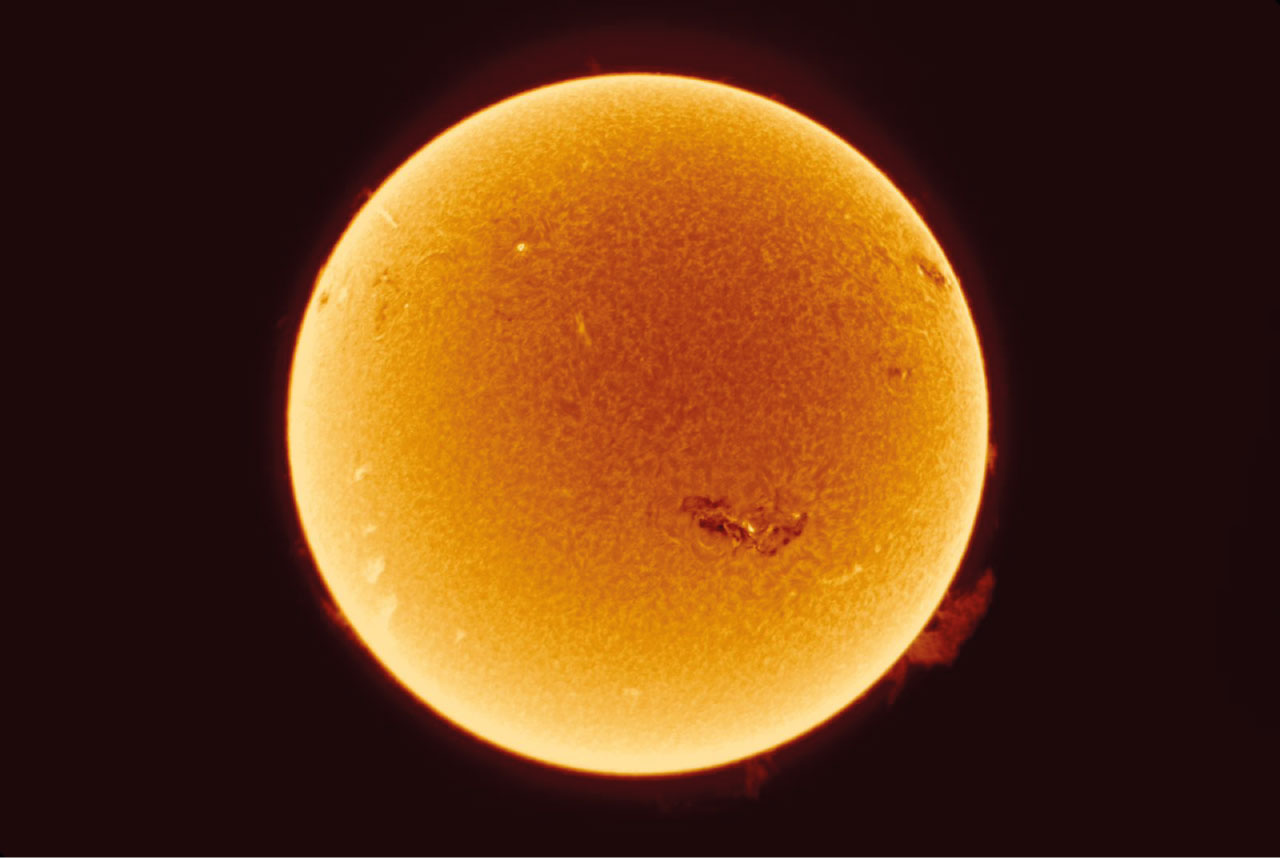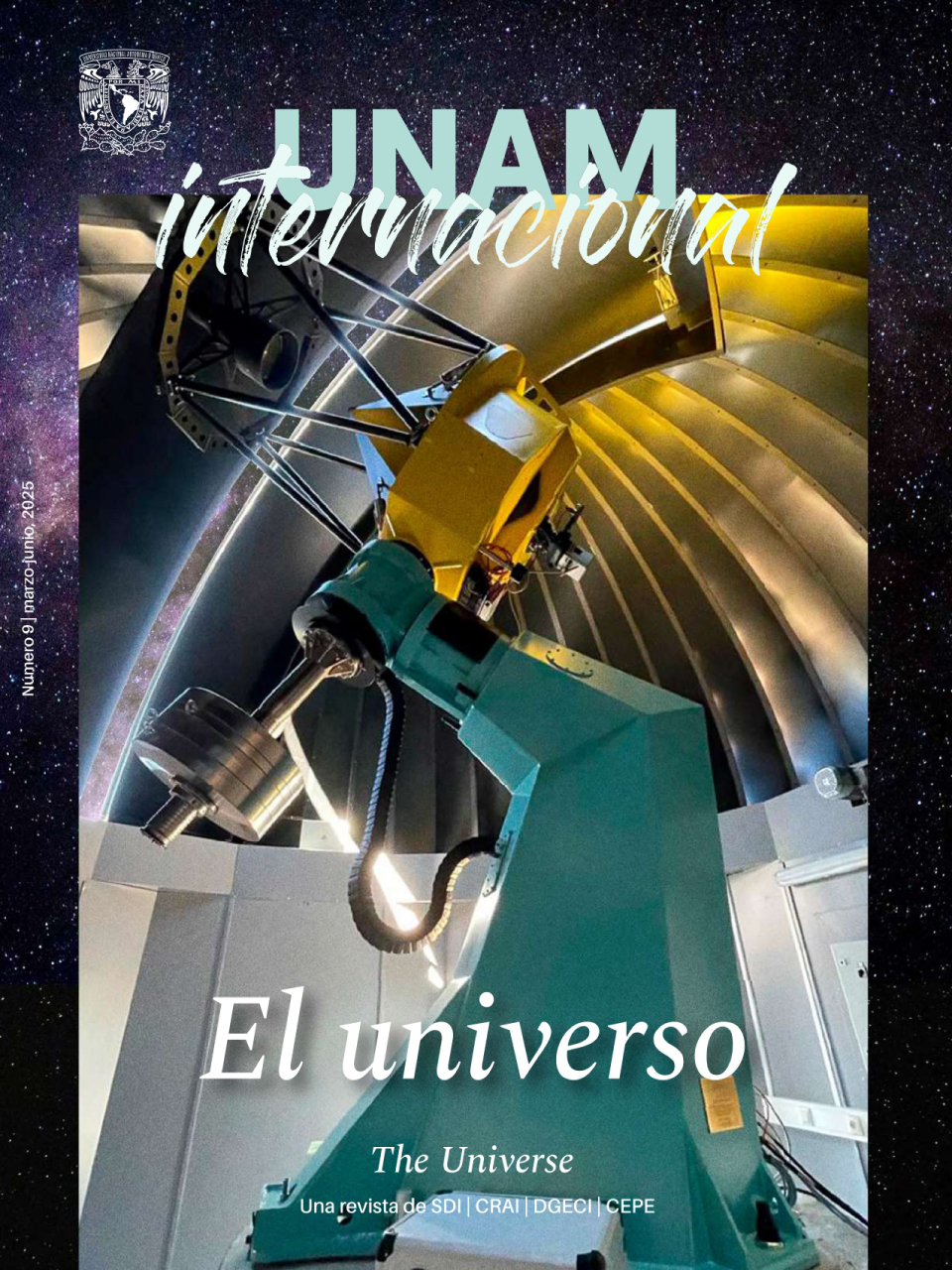31-03-2025
Cosmic storms! Solar and geomagnetic storms from the National Space Weather Laboratory
On May 10, 2024, a severe geomagnetic storm affected the Earth as a result of a series of solar storms. Originated by explosions on the surface of the Sun, these events can alter the Earth’s magnetic field and impact essential technological systems like satellites, telecommunications, and power grids. The recent storm was one of the most intense in decades; it had extreme geomagnetic activity and visible auroras at unusual latitudes, including parts of Mexico.In response to these phenomena, Mexico—through UNAM—has developed infrastructure and promoted public policies to mitigate their effects. Since the creation of the Mexico Space Weather Service (SCIESMEX) in 2014 and the National Laboratory of Space Weather (LANCE) in 2016, the country has advanced in the understanding and management of these risks. During the May 2024 storm, they issued notices and monitored the event in detail, hence demonstrating the capability for a national response.
SOLAR STORMS
Solar storms are explosions in the surface of the Sun that release large amounts of energy in the form of light and clouds of particles. When these clouds collide with the Earth’s magnetic field, disturbances occur, which can have significant repercussions on our technology and on national security (González Esparza, 2022).
The importance of space weather monitoring lies in its impact on critical infrastructures like communication satellites, global positioning systems, air navigation, and electric power grids. Extreme events can jeopardize the stability of these systems and affect the daily lives of millions of people.
In May 2024, a large sunspot called Active Region 3664 (figure 1) began to produce solar storms, light bursts, and mass ejections of the outer Sun layer. A severe geomagnetic storm (G4) was recorded on May 10, which reached the extreme level (G5) over a three-hour period (see NOAA, 2019 for space weather scaling). This storm was the most severe one since November 2003, although less severe than historical events such as the one registered in 1921 or the Carrington Event in 1859.
Figure 1. Image of the solar disk in Hα (6562.8 ˚A) from May 9, 2024

The image was obtained by the Geospatial Sciences Laboratory (LACIGE, http:www.lacige.unam.mx), UNAM.
PREPARATION AND RESPONSE IN MEXICO
Mexico has been actively working on mitigating risks associated with space weather. In 2014, the Civil Protection General Law recognized astronomical phenomena as potential threats, which prompted the development of prevention and response strategies. From the academic sector, SCIESMEX, established in 2014 by UNAM’s Institute of Geophysics, has played a key role monitoring and analyzing these phenomena. SCIESMEX was recognized by the International Space Environment Service (ISES) as a Regional Warning Center in 2015, which consolidated Mexico as a key player in the monitoring of space weather in Latin America (“Certifican al Servicio de Clima Espacial Mexico…”, 2019).
In 2016, CONAHCYT supported the creation of the LANCE, which has enabled the development of a scientific infrastructure to monitor space weather, including networks of solar radio burst detectors, the MEXART radio telescope, ionosonde stations for the study of Earth’s atmosphere layer ionized by the Sun, a network of magnetometers, and a system for monitoring the effects on the national electrical system (figure 2).
Figure 2. Geographic location of LANCE instrumental sites

LANCE participates in several international organizations to promote cooperation in space weather, such as the World Meteorological Organization (WMO), the Committee on Space Research (COSPAR), and the group of experts on space weather at the United Nations Office for Outer Space Affairs (UNOOSA). It also collaborates with various space weather services such as the Space Weather Prediction Center (SWPC) at the National Oceanic and Atmospheric Administration (NOAA, government of the United States), Brazilian Study and Surveillance of Space Weather (EMBRACE, National Institute of Space Research), and the Argentinean Space Weather Laboratory (LAMP). A protocol of intent was signed with Brazil, Argentina, and Chile in 2021 to promote collaboration in monitoring and studying space weather (Saavedra, 2021).
THE STORM IMPACT IN MEXICO
During the geomagnetic storm on May 10, 2024, LANCE-SCIESMEX issued ten informative bulletins to the National System for Civil Protection, warning them about the high levels of solar activity and their potential repercussions (González-Esparza, 2024).
The impact in Mexico included the degradation of high and low frequency radio communications, glitches in geopositioning and satellite navigation systems, as well as geomagnetically induced currents in the national power grid. Furthermore, the storm produced visible auroras in 17 Mexican states, an extremely rare phenomenon at these latitudes (figure 3).
Figure 3. Red aurora over the Colima Volcano during the geomagnetic storm of May 10, 2024.

The photograph was taken near Quesería, Colima (19.4° N, 103.57° W)
CONCLUSIONS
The geomagnetic storm of May 10, 2024, highlights the need to strengthen preparations for space weather events. Mexico has made significant progress in this field with the creation of SCIESMEX and LANCE, the development of monitoring infrastructure, and the implementation of risk mitigation strategies.
However, some challenges remain, such as the improvement of predictive models and the expansion of the monitoring network. International collaboration and investment in research will be key to the development of more effective strategies.
In this sense, Mexico is positioned as a reference in Latin America in space weather management, contributing to the strengthening of technological resilience and national security in the case of future extreme solar events.
Juan Américo González Esparza studied physics at UNAM’s Faculty of Sciences. He obtained his PhD in space physics at Imperial College, University of London, UK, and continued to a postdoc at the Jet Propulsion Laboratory, NASA-Caltech, United States. He is a researcher at UNAM’s Institute of Geophysics (IGF), and founder of its Michoacán Unit. He is the head of the Space Weather Service of the IGF and coordinator of the National Laboratory of Space Weather (LANCE).
References
“Certifican al Servicio de Clima Espacial México, de la UNAM” (20 de mayo de 2019). Boletín UNAM-DGCS-352. https://www.dgcs.unam.mx/boletin/bdboletin/2019_352.html
Gonzalez‐Esparza, Juan Américo (2022). La tormenta solar perfecta. Meteorología del espacio y sus aplicaciones. Libros UNAM, https://librosoa.unam.mx/handle/123456789/3607
González Esparza, Juan-Américo (13 de mayo de 2024). “La tormenta geomagnética del día de las madres”. Gaceta UNAM 5474. https://www.gaceta.unam.mx/la-tormenta-geomagnetica-del-dia-de-las-madres/
National Oceanic and Atmospheric Administration (NOAA, 2029). “NOAA Space Weather Scales”. Estados Unidos: Departamento de Comercio. https://www.swpc.noaa.gov/sites/default/files/images/NOAAscales.pdf
Saavedra, Diana. (16 de diciembre de 2021). “Clima espacial, a estudio en AL”. Gaceta UNAM 5261. https://www.gaceta.unam.mx/clima-espacial-a-estudio-en-al/
References
“Certifican al Servicio de Clima Espacial México, de la UNAM” (20 de mayo de 2019). Boletín UNAM-DGCS-352. https://www.dgcs.unam.mx/boletin/bdboletin/2019_352.html
Gonzalez‐Esparza, Juan Américo (2022). La tormenta solar perfecta. Meteorología del espacio y sus aplicaciones. Libros UNAM, https://librosoa.unam.mx/handle/123456789/3607
González Esparza, Juan-Américo (13 de mayo de 2024). “La tormenta geomagnética del día de las madres”. Gaceta UNAM 5474. https://www.gaceta.unam.mx/la-tormenta-geomagnetica-del-dia-de-las-madres/
National Oceanic and Atmospheric Administration (NOAA, 2029). “NOAA Space Weather Scales”. Estados Unidos: Departamento de Comercio. https://www.swpc.noaa.gov/sites/default/files/images/NOAAscales.pdf
Saavedra, Diana. (16 de diciembre de 2021). “Clima espacial, a estudio en AL”. Gaceta UNAM 5261. https://www.gaceta.unam.mx/clima-espacial-a-estudio-en-al/
